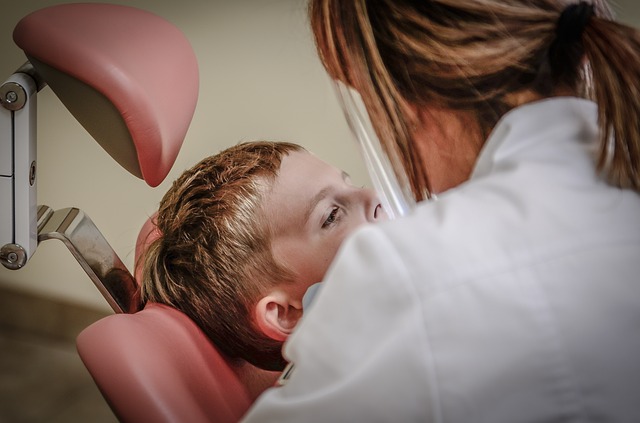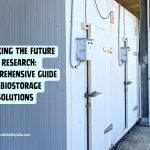
(Source: Pixabay)
Most cells in the human body can only create new cells of the same type. For example, skin cells cannot make blood cells, skin cells can only make more skin cells. Stem cells, however, are more versatile in their regeneration as they are unprogrammed and able to differentiate into many different cells, create new tissues and organs. Stem cell division is another unique factor that sets them apart from other cells. The National Institute of Health states, “When a stem cell divides, each new cell has the potential either to remain a stem cell or become another type of cell with a more specialized function, such as a muscle cell, a red blood cell, or a brain cell.” The three main takeaways about stem cells are the length of time they are able to renew and divide, their unspecialized character, and their ability to specialize. Researchers have known about stem cells in the body for decades but the findings of dental stem cells have opened up a whole new world for dentistry. This post will walk you through the various types of stem cells, dental stem cells and what they can potentially do for not only modern dentistry but for modern medicine.
What are the types of stem cells?
The two main types of stem cells are embryonic and adult. Embryonic stem cells only exist during the earliest stages of development in the blastocyst and are found in unused embryos that have been donated to science or in laboratories where they are grown. This type of stem cell is found in large quantities, is pluripotent which means it is able to differentiate itself to any cell type in the body and is relatively simple to grow in culture. There are two different types of adult stem cells, somatic stem cells, and induced pluripotent stem cells. Somatic stem cells are found in small quantities in fully developed tissues like bone marrow, liver, and skin and don’t seem to grow as easily in culture as embryonic stem cells. This type of adult stem cell is meant to repair and maintain the tissue it was found in making it more likely to differentiate into a cell type for its origin. Adult stem cells are able to be taken from one part of the body and transplanted into another part and differentiate from there. Induced pluripotent stem cells are adult cells that have been reprogrammed in a laboratory to act like pluripotent embryonic stem cells. These stem cells are useful for research on normal development and diseases, and for testing and developing new therapies and drugs.
Dental Stem Cells
So what does this mean for dentistry? A source of adult stem cells has been found in the dental pulp creating new opportunities for regenerative medicine. These stem cells are easily accessible especially in children or in the millions of patients that get their wisdom teeth out every year. The best time to recover dental stem cells is when the teeth are young. However, the stem cells will be available at any age so long the teeth are healthy. Since the initial discovery of dental adult stem cells, various other dental stem cells have been characterized and isolated:
- Dental Pulp Stem Cells (DPSC) are found in the pulp of teeth and can differentiate into very useful cells. The dental pulp is the soft tissue in the center of a tooth with odontoblast cells. Their ability to differentiate into the bone, liver, brain and pancreatic cells allows the potential to cure diseases and dental problems. They are a presumed option for regenerative dentistry because they are easy to access, keep alive, preserve, recombine and can create more dentin than non-dental stem cells.
- Stem Cells from Human Exfoliated Deciduous Teeth (SHED) are able to differentiate into various and more cell types than DPSCs. These cell types include bone formation, fat, and neural cells.
- Stem Cells from Apical Papilla (SCAP) In permanent immature teeth, Mesenchymal stem cells (MSC) are found in the apical papilla. MSCs are great for regenerative dentistry because they reduce scarring, inflammation, and improve immune function. The apical papilla has less vascular and cellular components and a higher proliferation than dental pulp.
- Periodontal Ligament Stem Cells (PDLSC) are found in the tissue surrounding the teeth, periodontium. These stem cells regenerate periodontal components like the alveolar bone, cementum and periodontal ligament.
Regenerative Dentistry
The discovery of dental stem cells is opening up a world of opportunity for future dental procedures. If stem cell treatment is implemented into modern dentistry, huge progress will be made in procedures like root canals and periodontal treatments allowing them to be minimally invasive, less time-consuming and with greater results. Dental stem cells have the potential to regenerate dental tissue like periodontal ligaments, dental pulp, as well as non-dental tissues including bones and nerves. Dental problems like cavities, sensitivity, dead teeth, and bone loss could effectively be treated with stem cells. Endodontic treatment, or root canals, involves removing the infected dental pulp and replacing it with foreign materials that leave the tooth dead. With dental stem cells, the dental pulp could be restored and the tooth preserved. Periodontal or gum disease is a serious infection that can be detrimental to the jaw bone when there is a loss of the periodontium, the tissues that support the teeth. Typically the loss of the periodontium is irreversible but the use of various dental stem cells could result in the healing of periodontal disease while regenerating the periodontium. These dental cells also have the potential to treat a large range of non-dental conditions and diseases. Their ability to create muscle, bone, neural and connective tissues could treat spina bifida, Alzheimer’s disease, spinal cord injuries, brain injuries, liver disease and much more.
Challenges with Stem Cell Treatment
Although research is rapidly growing and there are several, obvious advantages to dental stem cell treatment, the industry still faces challenges. Like any new technology, the long-term effects of these treatments are unknown and more research and testing needs to be done before it emerges into modern dentistry. Another large barrier is the ongoing ethical debate of using embryonic stem cells. Regardless of the challenges, researchers are optimistic at the potential these treatments have. Dental stem cell treatment has a bright future that could change the way many diseases and conditions are treated while impacting many lives for the better.
About The Author:
Dr. Cory Fortson, DDS began his educational journey by earning a BS in Nutritional Science from Michigan State University. He is a 2014 graduate of The University of Detroit Dental School and a third-generation dentist who is proud to provide excellent dental care to the Lathrup Village community from his practice at Fortson Dentistry.


